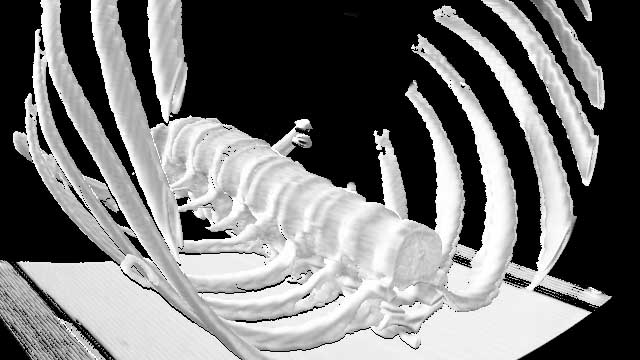Hole in the Clouds
Dec 12, 2009

This building is headquarters for the NXP corporation in Eindhoven, Netherlands.
I like the looks of the building a lot, but I'm pretty sure I wouldn't like working in it. NXP makes semiconductors and suchlike, including chips for car radio tuners, cable-TV boxes, and keyless entry systems. Half the laptop computers in the world use NXP chips in their power supplies. Although these products seem socially useful, and I'm sure they are challenging to make, there's something scary about the corporate culture.
This is the first sentence of NXP's press release from yesterday: "NXP now offers the industry-leading TJA1021TK, the first LIN 2.1-certified transceiver, in a space-saving HVSON8 package."
And this is the first sentence of the press release from the day before yesterday: "With TDA18272, NXP introduces a unique Master/Slave architecture for optimizing the design of multi-tuner applications."
It's like they're trying to make me feel stupid. Even so, I think they've got a pretty building.
Eindhoven
architecture
tech
semiconductors
Netherlands
Jan 26, 2010

The first commercial use of Colin Doody's software might be medical; doctors could use it to visualize C-T scans and ultrasounds in lifelike 3-D. But it could be that the first commercial applications will come in the defense or geospatial industries; 3-D renderings from photos or satellite images would permit the interactive, virtual-reality sort of understanding of buildings and terrain that has been heretofore limited to video games. For that matter, video-game makers might be the first to use this software on a large scale; to them, the benefits of quick-and-easy generation of 3-D imagery are pretty obvious.
And then there are all the e-commerce folks who could use the software, which is called Luster, to help customers see contemplate all the angles on products in a catalog.
A final group of potential Luster-users is . . . all of us. Much of the stuff on our computer screens could come to life, so to speak, in 3-D. We could download a free little Luster player, much like a Flash player, that would unlock the special effects in all sorts of software created with Luster.
Somewhere in all this, there's got to be some money, figure Colin and a handful of his college friends from Rochester Institute of Technology, the principals of Darkwind Media Company. Already, they're bringing in enough income to support themselves while they work fulltime polishing their product and growing their business.
It's a lot of work. "Starting a business has meant doing everything," one of the Darkwind guys recently told a reporter for the Rochester Democrat and Chronicle. "Marketing, financial books, keeping current clients happy, all while sitting in front of a computer eight hours a day programming."
The rib cage shown here was created using Luster, from two-dimensional "slices" of a C-T scan.
tech
Colin Doody
3-D
luster
Darkwind Media
Apr 4, 2014
 Washington, DC, travel agent and blogger Jean Newman Glock had an hour to kill the other day and a brand new cellphone camera with which to kill it. So, perhaps to model good behavior for her tourist-clients, she headed straight for the National Gallery of Art and pointed her new Nokia at some four-hundred-year-old paintings.
Washington, DC, travel agent and blogger Jean Newman Glock had an hour to kill the other day and a brand new cellphone camera with which to kill it. So, perhaps to model good behavior for her tourist-clients, she headed straight for the National Gallery of Art and pointed her new Nokia at some four-hundred-year-old paintings.
The photos she snapped and published in her blog include this snuffed-out candle, a detail from a 1635 still life, "Banquet With Mince Pie," by the Dutch painter Willem Claesz Heda. "So many theories can be created," notes Glock, "about this hastily ended feast at an obviously wealthy household."
The trip to the museum apparently left Glock with some long thoughts, as illustrated by the candle gone dark: musings about the brevity of life and the irrelevance of earthly possessions (with the possible exception of that new Nokia Lumia Icon camera with its 22-megapixel sensor and easy upload to WordPress via tablet).
Glock didn't come to her philosophical insights all by herself; she experienced the art that afternoon as part of a National Gallery tour on the theme of "Glimpses of Seventeenth Century Life." Leading the tour was someone Glock describes as "the amazing scholar and docent Sandra Horowitz."
That amazing scholar and docent, Sandra Horowitz, is my mom. I'm busting my buttons here.
Washington, D.C.
tech
National Gallery of Art
Sandra Horowitz
still life
camera
Dutch painting
docent
1635
Willem Claesz Haeda
phone
(Image credit: Jean Newman Glock)


 Washington, DC, travel agent and blogger Jean Newman Glock had an hour to kill the other day and a brand new cellphone camera with which to kill it. So, perhaps to model good behavior for her tourist-clients, she headed straight for the National Gallery of Art and pointed her new Nokia at some four-hundred-year-old paintings.
Washington, DC, travel agent and blogger Jean Newman Glock had an hour to kill the other day and a brand new cellphone camera with which to kill it. So, perhaps to model good behavior for her tourist-clients, she headed straight for the National Gallery of Art and pointed her new Nokia at some four-hundred-year-old paintings.